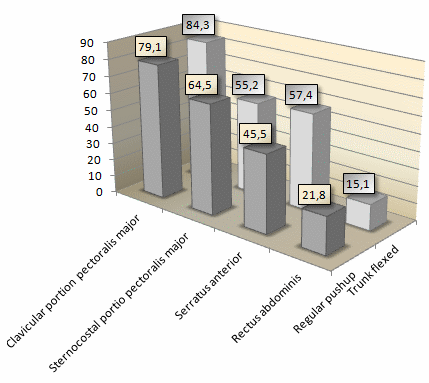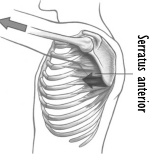|
Push-ups heavier from a raised platform
The load on your pecs, delts and triceps is 9 to 15 percent heavier if you place your feet on a raised platform to do your push ups, write sports scientists from the University of Wisconsin-Parkside soon in the Journal of Strength and Conditioning Research.

Push-ups
Push-ups are the most popular exercise on earth for building upper body strength. But most strength athletes sooner or later give up on the push-ups and go over to bench presses and flies because they find that their muscles are no longer stimulated by push-ups.
However, push-ups train parts of your upper body that are easily neglected if you only do weight training, so some trainers insist that their athletes keep push-ups in their training sessions. But then in such a way that they build muscle strength.
Study
A classic way of making a push-up heavier is to place your feet on a raised surface. If you are not strong enough to do a regular push-up, you can place your hands on a raised surface. In the study we are referring to here, the researchers wanted to measure how much heavier or lighter a push-up is when done from a raised surface. They used plateaus about 30 and 60 cm high.
The researchers measured the 'ground reaction force' [GRF] during the execution of the push up. That's the force that the ground exercises on the body during the movement.
Results
When the test subjects placed their feet on a 30-cm-high plateau, the maximal GRF was 9 percent higher than when the push-ups were done on a flat surface. When the subjects put their feet on a plateau 60 cm above the ground, the GRF was 15 percent higher.


How to calculate
The table above shows how to calculate the number of kgs you shift when doing elevated push-ups, according to your bodyweight.
Source:
J Strength Cond Res. 2011 Oct;25(10):2891-4.
More:
Push-ups cause burst blood vessel in retina 10.04.2011
How you can reduce push-up hand pain 04.04.2011
Best push-ups achieved with hands close together 29.04.2010
Archives:
Resistance Training
Push-ups
|






